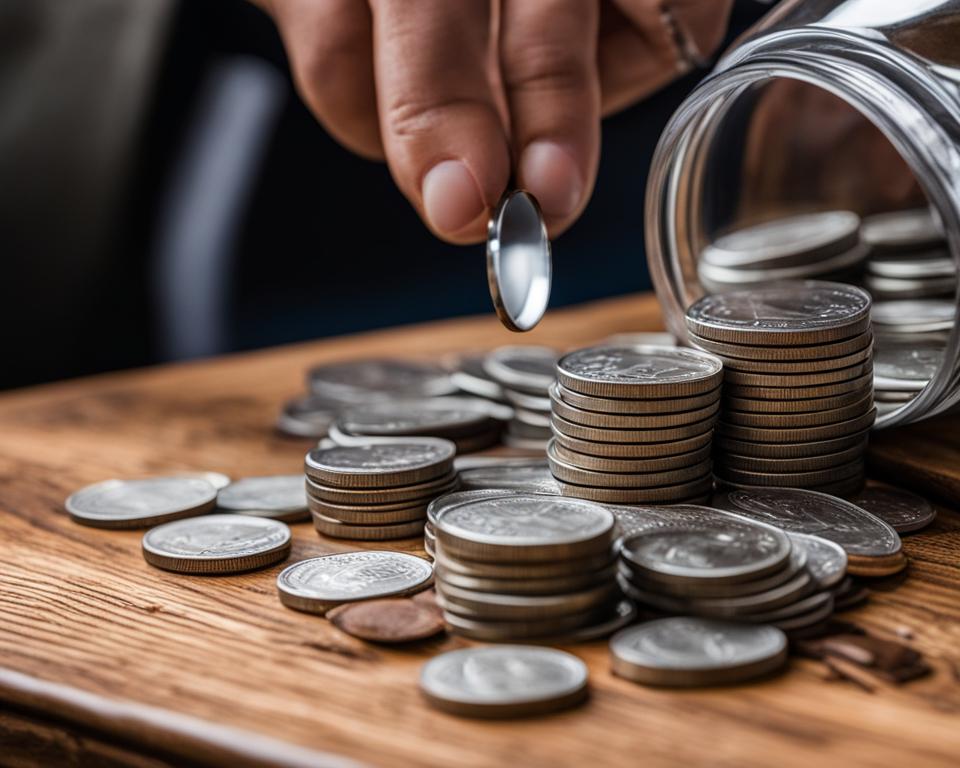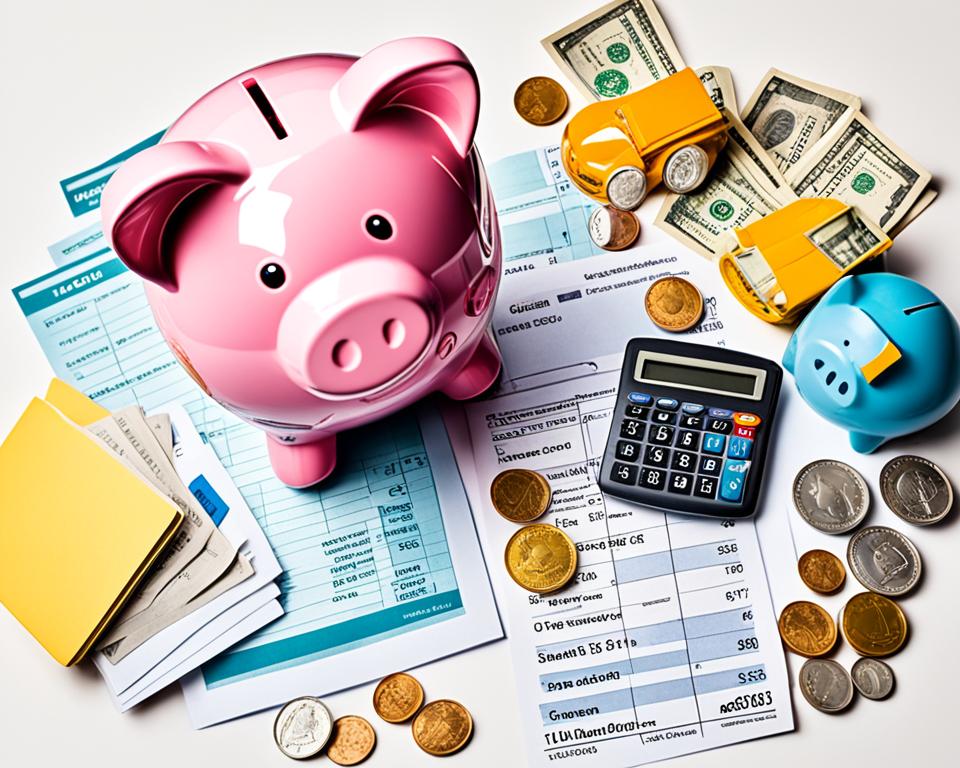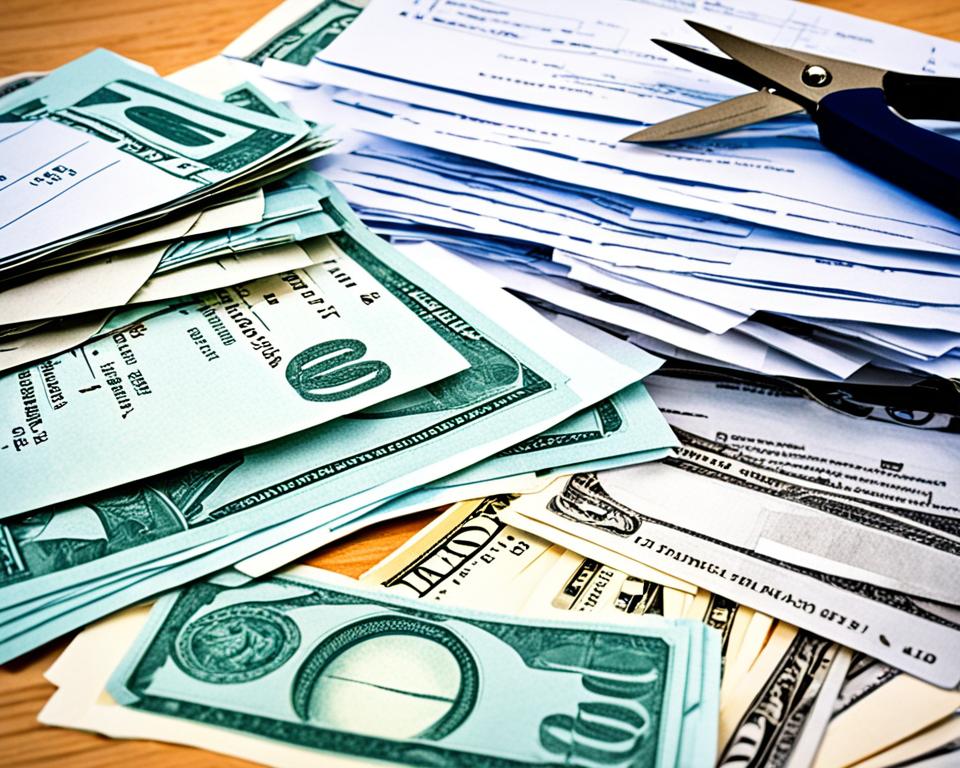Investing in precious metals like gold and silver can offer numerous benefits, such as acting as a hedge against inflation and providing portfolio diversification. However, it’s important to consider the potential drawbacks before making an investment decision.
Understanding the disadvantages can help you make an informed choice and manage your investment effectively.
One disadvantage of investing in precious metals is the lack of cash flow or dividends. Unlike stocks or bonds, precious metals do not generate income or provide regular payouts. This means that you won’t receive periodic returns on your investment in the form of interest, dividends, or rent.
While precious metals can still appreciate in value over time, the lack of cash flow can be a significant drawback, especially if you rely on your investments to generate income. Therefore, it’s crucial to evaluate your financial goals and consider whether you can afford to prioritize long-term potential growth over immediate cash flow.
Key Takeaways:
- Investing in precious metals has disadvantages alongside its advantages.
- One disadvantage is the lack of cash flow or dividends.
- Unlike stocks or bonds, precious metals do not generate regular income or payouts.
- Consider your financial goals and whether you can prioritize long-term potential growth over immediate cash flow.
- Understanding the drawbacks of investing in precious metals is crucial for making informed investment decisions.
Various Investing Options in Gold
When it comes to investing in gold, you have a variety of options to choose from. Each option has its own set of advantages and considerations, allowing you to tailor your investment approach to your specific goals and risk tolerance.
Purchasing Physical Gold
If you prefer a tangible investment, you can choose to purchase physical gold in the form of coins, bars, or even jewelry. Owning physical gold allows you to have direct ownership and control over your investment. However, it’s important to consider the expenses associated with storage and security, as well as the potential challenges of liquidity when selling physical gold.
Gold ETFs
Gold Exchange-Traded Funds (ETFs) are investment funds that hold physical gold on behalf of investors. Investing in gold ETFs provides you with the opportunity to gain exposure to the price of gold without the need to physically own and store the metal. Gold ETFs are traded on major stock exchanges, offering liquidity and ease of buying and selling. However, it’s crucial to be aware of the potential volatility and management fees associated with these investment vehicles.
Gold IRAs
Gold Individual Retirement Accounts (IRAs) are a type of retirement account that allows you to invest in gold and other precious metals. By adding gold to your IRA, you can benefit from the potential price appreciation of the metal while enjoying the tax advantages of an IRA. However, it’s important to understand the IRS rules and regulations surrounding gold IRAs and the potential limitations on withdrawals before reaching retirement age.
Gold Mining Stocks
Investing in gold mining stocks provides you with exposure to companies involved in the exploration, development, and production of gold. By investing in mining stocks, you can potentially capture both the price movements of gold and the successful operations of mining companies. However, it’s essential to research and understand the specific risks associated with mining stocks, such as operational challenges and regulatory factors that can impact company performance.
| Investment Option | Pros | Cons |
|---|---|---|
| Purchasing Physical Gold | – Tangible ownership – Potential for privacy – Direct control over investment |
– Expenses for storage and security – Challenges of liquidity |
| Gold ETFs | – Ease of buying and selling – Diversification within the fund – Lower transaction costs compared to physical gold |
– Potential volatility – Management fees |
| Gold IRAs | – Tax advantages – Potential for price appreciation – Retirement account benefits |
– IRS rules and regulations – Limited withdrawal options before retirement age |
| Gold Mining Stocks | – Potential for significant returns – Exposure to successful mining operations – Diversification within the mining industry |
– Risks associated with mining activities – Regulatory factors impacting company performance |
Each investing option in gold has its own trade-offs, and it’s crucial to consider your investment goals, risk tolerance, and financial situation when choosing how to invest in gold. A diversified portfolio may include a combination of physical gold, gold ETFs, gold IRAs, and gold mining stocks to benefit from the unique advantages each option offers.
Pros and Cons of Gold Investing
When it comes to investing, gold has its own set of advantages and disadvantages to consider. Understanding these pros and cons can help you make informed investment decisions. Let’s take a closer look at the pros of gold investing:
Advantages of Investing in Gold
- Diversification: Gold provides an opportunity to diversify your investment portfolio. It typically has a low correlation with other asset classes like stocks and bonds, which means its price movements may not align with traditional investments. Adding gold to your portfolio can help reduce risk and increase stability.
- Store of Value: Gold has long been considered a reliable store of value. Throughout history, gold has held its worth and maintained purchasing power. It can act as a hedge against inflation and protect your wealth during economic downturns.
- Potential for Growth: Gold has the potential to appreciate in value over time. As global demand for gold continues to rise, driven by factors like jewelry, central bank reserves, and industrial uses, the price of gold may increase, allowing investors to benefit from capital appreciation.
- Hedge Against Inflation: Gold is often seen as a hedge against inflation. When inflation rates rise, the value of traditional currencies may decline, but gold prices tend to rise in tandem with or above the inflation rate, helping to preserve purchasing power.
Now, let’s explore the cons of gold investing:
Disadvantages of Investing in Gold
- Opportunity Cost: Investing in gold may come at the expense of potentially higher returns from other assets during periods of high real interest rates. While gold can provide stability, it may not offer the same level of growth as other investments in certain market conditions.
- Potential Price Drops or Stagnation: Like any investment, the price of gold can experience drops or periods of stagnation. Economic factors, market sentiment, and other geopolitical events can influence the price of gold, which may result in temporary declines or stagnant performance.
- Lack of Cash Flow or Dividends: Unlike stocks or bonds that provide regular income through dividends or interest payments, gold does not generate cash flow. Its value lies in its price appreciation rather than any direct income it generates for investors.
- Costs of Storing Physical Gold: If you choose to invest in physical gold, you’ll need to consider the costs associated with storage and security. Storing gold securely can involve additional expenses such as rental fees for safe deposit boxes or the purchase of secure storage solutions.
Understanding the pros and cons of gold investing is crucial for making informed investment decisions. While gold can offer portfolio diversification, a reliable store of value, and the potential for growth, it’s important to consider factors like opportunity costs, potential price drops or stagnation, lack of cash flow, and storage costs. By weighing these factors and aligning them with your investment goals, you can determine whether gold is a suitable addition to your investment portfolio.
Various Investing Options in Silver
Similar to gold, there are various options available for investing in silver. When it comes to silver investing, you have a range of choices that cater to different preferences and investment goals. Let’s explore some of the investing options in silver:
1. Physical Silver
One option is to invest in physical silver, which involves purchasing silver coins, bars, or other silver items. This allows you to own and hold physical silver, giving you a tangible asset that can be stored securely. Physical silver can be purchased from reputable bullion dealers or even online platforms specialized in precious metals.
2. Silver ETFs
Exchange-Traded Funds (ETFs) have gained popularity as a convenient way to invest in silver. Silver ETFs track the price of silver and offer exposure to its movements without the need to physically own and store the metal. This option provides flexibility and liquidity, as you can buy and sell shares of the ETF on stock exchanges.
3. Silver IRAs
Silver Individual Retirement Accounts (IRAs) offer a tax-advantaged way to invest in silver for retirement purposes. With a silver IRA, you can allocate a portion of your retirement portfolio to physical silver or silver-backed investment products. This option allows you to benefit from potential silver price appreciation while enjoying the tax advantages associated with IRAs.
4. Silver Mining Stocks
Investing in silver mining stocks is another avenue to consider. By purchasing shares of silver mining companies, you can gain exposure to the silver industry. The performance of silver mining stocks is influenced by factors beyond the price of silver, such as company management, production costs, and overall market conditions. This option allows you to participate in the potential growth of the silver mining sector.
Each of these investing options in silver has its own benefits and drawbacks. It’s important to research and understand the specifics of each option before making investment decisions. Consider factors such as your risk tolerance, investment horizon, and overall portfolio diversification strategy.
By diversifying your investment portfolio with silver, you can potentially benefit from the unique properties of this precious metal, including its industrial applications and store of value. Whether you choose to own physical silver, invest in silver ETFs, opt for Silver IRAs, or explore silver mining stocks, carefully consider your investment goals and consult with a financial advisor if needed.

Exploring the various investing options in silver can help you make informed decisions and optimize your investment strategy.
Pros and Cons of Silver Investing
Investing in silver offers its own set of pros and cons. Understanding these advantages and disadvantages can help you make informed decisions when considering silver as an investment.
Advantages of Investing in Silver
- The various investing options available: Investing in silver provides you with multiple options, including physical silver, silver ETFs, silver IRAs, and stocks of silver mining companies. This flexibility allows you to choose the option that aligns best with your investment goals and preferences.
- The affordability of silver compared to gold: Silver is often considered a more affordable investment option compared to gold. This accessibility allows investors with smaller budgets to enter the precious metals market and benefit from potential price appreciation.
- The potential for greater earning potential: Silver is known for its volatility, which can offer the potential for significant returns. Its price movements can be more pronounced compared to other precious metals, providing opportunities for traders and investors to profit from short-term price swings.
- Link to industrial demand: Silver has a strong correlation with industrial demand. It is widely used in various industries, including electronics, solar panels, and medicine. This industrial demand can contribute to the value of silver, even during periods when other precious metals may be experiencing price declines.
Disadvantages of Investing in Silver
- Higher risk associated with volatility: While silver’s volatility can be advantageous for potential gains, it also introduces higher risks. Prices can experience sharp fluctuations, which can lead to potentially significant losses if not carefully managed.
- Lack of cash flow or dividends: Unlike investing in stocks or real estate, investing in silver does not provide cash flow or dividends. The returns from silver investments primarily come from price appreciation, making it a more speculative investment.
When considering silver as an investment, weigh these pros and cons to evaluate its fit within your overall investment strategy. It’s essential to assess your risk tolerance, investment goals, and time horizon before making any investment decisions.
Investing in silver offers the potential of significant returns due to its volatility and industrial demand, but it also comes with higher risks and lacks the cash flow or dividends provided by other investment options.
Other Precious Metals: Platinum and Palladium
While gold and silver are well-known precious metals for investment, it’s important not to overlook other valuable options like platinum and palladium. These metals offer unique advantages and have various applications across different industries.
Investing in Platinum and Palladium
Investing in platinum and palladium can be a smart move for diversifying your portfolio and potentially gaining returns. Both metals are considered part of the platinum group metals (PGMs) and have their own distinct characteristics.
- Benefits of Investing in Platinum: Platinum is widely used in the automotive industry for catalytic converters. Its scarcity and industrial demand contribute to its investment value. As automotive technology continues to advance, the demand for platinum is likely to increase, making it a promising investment option.
- Benefits of Investing in Palladium: Palladium has a variety of industrial uses, including electronics, dentistry, and even jewelry. It is particularly valuable in the automotive industry, where it is used in catalytic converters, similar to platinum. The increasing demand for environmentally friendly vehicles further enhances the investment potential of palladium.
Uses of Platinum and Palladium
Understanding the uses of these metals is crucial in evaluating their potential investment benefits. Here are some key applications:
Platinum Uses:
- Automotive industry: Catalytic converters
- Chemical industry: Catalysts for various chemical reactions
- Electronics industry: Electrodes, contacts, and connectors
- Medical industry: Medical devices and instruments
- Jewelry industry: High-quality platinum jewelry
Palladium Uses:
- Automotive industry: Catalytic converters
- Electronics industry: Capacitors, semiconductors, and sensors
- Dentistry: Dental equipment and dental alloys
- Chemical industry: Catalysis and hydrogen purification
- Jewelry industry: Palladium alloys in jewelry
Now that you understand the benefits of investing in platinum and palladium, along with their diverse applications, you can make an informed decision on whether these precious metals align with your investment goals and risk tolerance.

| Investing in Platinum | Investing in Palladium |
|---|---|
|
|
Investing in platinum and palladium can offer unique opportunities due to their industrial applications and growing demand. However, it’s important to conduct thorough research and consider your investment objectives before making any investment decisions.
Advantages of Investing in Precious Metals
Investing in precious metals offers several advantages that can help you diversify your portfolio and protect your wealth. Here are some of the key benefits:
Hedge against Inflation
One of the major advantages of investing in precious metals is their ability to act as a hedge against inflation. When inflation rises, the value of traditional assets like stocks and bonds may decrease, while the price of precious metals tends to rise in line with or above the inflation rate. By investing in precious metals, you can help safeguard your purchasing power and mitigate the impact of inflation on your wealth.
Tangible Asset
Precious metals are tangible assets that hold value beyond their investment purposes. Unlike stocks or mutual funds, which are intangible assets that represent ownership in a company, precious metals like gold and silver are physical assets that you can hold in your hand. This tangibility provides a sense of security and stability, especially during times of economic uncertainty.
Portfolio Diversification
Diversification is an essential strategy when it comes to investing, and precious metals offer a unique opportunity to diversify your portfolio. The price movements of precious metals often don’t align with those of stocks and bonds, meaning they can act as a counterbalance to traditional investments. By including precious metals in your portfolio, you can reduce the overall risk and potentially enhance your returns.
Liquidity
Precious metals are highly liquid assets, meaning they can be quickly sold and converted into cash when needed. This liquidity provides flexibility and allows you to react swiftly to changing market conditions. Whether you need funds for an emergency or you want to take advantage of an investment opportunity, the ability to convert your precious metals into cash provides you with peace of mind and financial freedom.
Overall, investing in precious metals has numerous advantages, including the ability to act as a hedge against inflation, the tangibility of the assets, the diversification potential for your portfolio, and the liquidity they offer. Consider adding precious metals to your investment strategy to reap these benefits and secure your financial future.
Risks of Investing in Precious Metals
While there are advantages to investing in precious metals, it’s essential to consider the risks and disadvantages associated with these investments. Understanding the potential drawbacks can help you make informed investment decisions and manage your portfolio effectively.
1. Price Volatility
Precious metals are known for their price volatility, meaning their value can fluctuate significantly over short periods. Several factors can drive precious metals prices, including economic indicators, geopolitical events, and market sentiment. This volatility can result in rapid changes in the value of your investments, potentially leading to substantial gains or losses.
2. Stock-Based Investment Risks
Investing in the precious metals sector through stocks carries its own set of risks. Companies involved in mining, exploration, or production of precious metals may face challenges such as poor management, operational difficulties, or financial issues. Additionally, the performance of these stocks can be influenced by broader market conditions, making them susceptible to market downturns or sector-specific challenges.
3. Trading Interruptions
Another risk to be aware of is trading interruptions. Market disruptions, such as system failures, trading suspensions, or regulatory actions, can impact the ability to buy or sell precious metals and related securities when you need to. These interruptions can limit your ability to take advantage of market conditions or react swiftly to changes in the investment landscape.
4. Quality Issues
When investing in physical precious metals, particularly in the form of coins or bars, there is a risk of counterfeit or substandard products. It’s crucial to ensure the authenticity and quality of the precious metals you purchase, as counterfeit or impure metals may significantly impact their value. Engaging reputable dealers and verifying the authenticity can help mitigate this risk.
5. Investing in One Precious Metal
Investing solely in one precious metal, such as gold or silver, exposes you to the specific risks and price fluctuations of that metal. Diversifying your precious metals investments across different metals, such as platinum or palladium, can help mitigate the risk of concentration in one metal. Diversification allows you to spread your risk and potentially benefit from the differing market dynamics of each metal.
By understanding and assessing these risks, you can make informed decisions about investing in precious metals. It’s important to evaluate your risk tolerance, investment objectives, and time horizon before committing to any investment strategy. Consider consulting with a financial advisor who specializes in precious metals to help guide your investment decisions.
Note: The image above illustrates the risks associated with investing in precious metals.
How to Invest in Precious Metals
Investing in precious metals can be a strategic addition to your investment portfolio. Whether you are interested in the stability of physical metals or prefer the convenience of investment products, there are several options to consider. Understanding how to invest in precious metals can help you make informed decisions based on your investment goals and preferences.
Investing in Physical Precious Metals
One way to invest in precious metals is by purchasing physical metals such as gold, silver, platinum, or palladium. These metals can be bought in the form of bars, coins, or jewelry and offer tangible assets that hold intrinsic value. However, it’s important to consider the costs associated with storage and security when investing in physical precious metals.
Investing in Precious Metals Investment Products
If you prefer a more convenient and accessible approach, you can invest in precious metals through investment products. This includes investing in precious metal stocks, which are shares in companies involved in mining and producing precious metals. Another option is investing in precious metal exchange-traded funds (ETFs), which offer exposure to the price movements of precious metals without the need to directly own physical metals. Additionally, you can explore futures contracts for precious metals, which allow you to speculate on the future price of metals without taking ownership.
Each investment product has its own considerations and potential benefits. For example, investing in precious metal stocks may provide opportunities for capital appreciation and dividends, but comes with risks associated with the mining industry. Precious metal ETFs offer diversification and liquidity, allowing you to trade them like stocks, but they do not provide ownership of physical metals. Futures contracts enable you to control a larger quantity of precious metals with a smaller upfront investment, but they can be more complex and involve higher levels of risk.
It’s essential to carefully evaluate the characteristics and risks of each investment product before making a decision. This includes considering factors such as liquidity, fees, and historical performance.
Advantages of Investing in Precious Metals
Investing in precious metals offers several advantages that appeal to investors. These include:
- Acting as a hedge against inflation, as the prices of precious metals tend to rise during periods of inflation.
- Providing portfolio diversification, as precious metals’ price movements often differ from those of traditional asset classes like stocks and bonds.
- Offering tangible assets with inherent value beyond investment purposes.
- Ensuring liquidity, as precious metals can be easily sold and converted into cash in most markets.
Risks of Investing in Precious Metals
While there are advantages to investing in precious metals, it’s important to consider the risks as well. These risks include:
- Price volatility, as precious metals can experience significant price fluctuations in response to various market factors.
- Risks associated with stock-based investments in the precious metals sector, such as poor company management or financial instability.
- Potential trading interruptions or limitations that may affect the accessibility and liquidity of investment products.
- Possible quality issues with impure metals, which can impact the value and authenticity of physical precious metals.
- The risk of overexposure to a single precious metal, which may result in concentrated investment risk.
Conclusion
Investing in precious metals can be a valuable addition to your investment portfolio. It offers unique advantages that can help protect against inflation and diversify your holdings. Precious metals like gold and silver have maintained their value over time and are often considered a safe haven during times of economic uncertainty.
However, it’s crucial to consider the potential drawbacks and risks associated with investing in precious metals. Price volatility is a significant factor to keep in mind, as the value of precious metals can fluctuate. Additionally, each metal has its own specific drawbacks, such as the costs of storage and security for physical metals.
To make informed investment decisions, carefully assess the pros and cons of precious metal investments. Consider your individual investment goals, timeframes, and risk tolerance. By doing so, you can determine the most suitable approach for including precious metals in your investment strategy and work towards long-term financial security.
FAQ
What is One Disadvantage of Investing in Precious Metals?
One disadvantage of investing in precious metals is the opportunity cost, as you may miss out on higher returns from other assets during periods of high real interest rates.
What are the Various Investing Options in Gold?
Various investing options in gold include purchasing physical gold (coins, bars, jewelry), investing in gold ETFs, gold IRAs, or stocks of gold mining companies.
What are the Pros and Cons of Gold Investing?
The pros of gold investing include portfolio diversification, a reliable store of value, and the potential to act as a hedge against inflation. The cons include potential price drops or stagnation, lack of cash flow or dividends, and the costs of storing physical gold.
What are the Various Investing Options in Silver?
Various investing options in silver include purchasing physical silver (coins, bars), investing in silver ETFs, silver IRAs, or stocks of silver mining companies.
What are the Pros and Cons of Silver Investing?
The pros of silver investing include affordability, potential for greater earning potential, and its link to industrial demand. The cons include higher volatility and lack of cash flow or dividends.
What are Other Precious Metals Worth Considering for Investment?
Other precious metals worth considering for investment are platinum and palladium, which have their own unique advantages and applications.
What are the Advantages of Investing in Precious Metals?
The advantages of investing in precious metals include portfolio diversification, a hedge against inflation, tangibility, and liquidity.
What are the Risks of Investing in Precious Metals?
The risks of investing in precious metals include price volatility, stock-based investment risks, trading interruptions, quality issues with impure metals, and the potential drawbacks of investing in only one metal.
How Can I Invest in Precious Metals?
You can invest in precious metals by purchasing physical metals or investing in precious metals investment products such as stocks of precious metals mining companies, precious metals ETFs, or futures contracts.
What is the Conclusion on Investing in Precious Metals?
Investing in precious metals offers advantages like portfolio diversification and a hedge against inflation. However, it’s important to consider the associated risks and drawbacks when making investment decisions.





